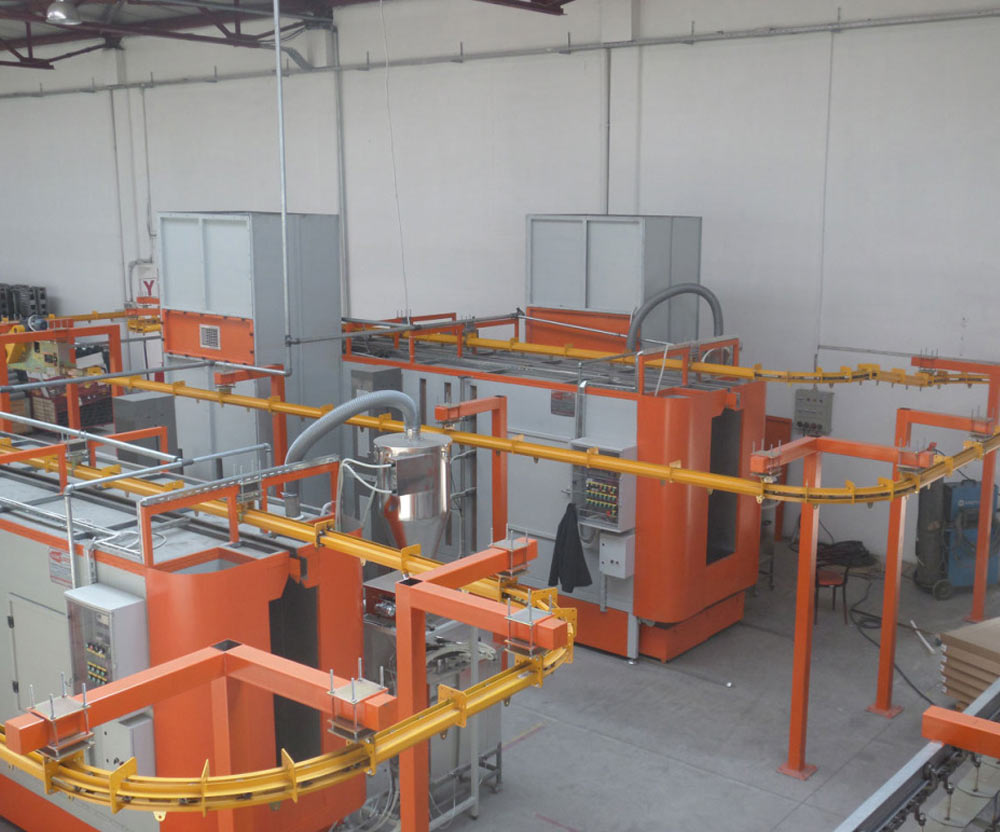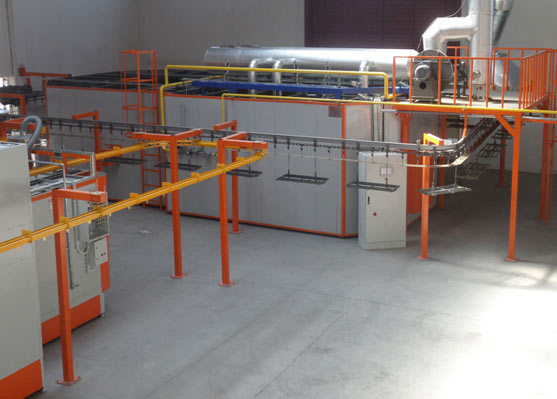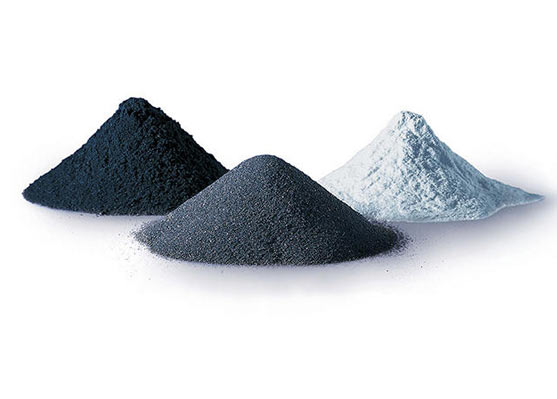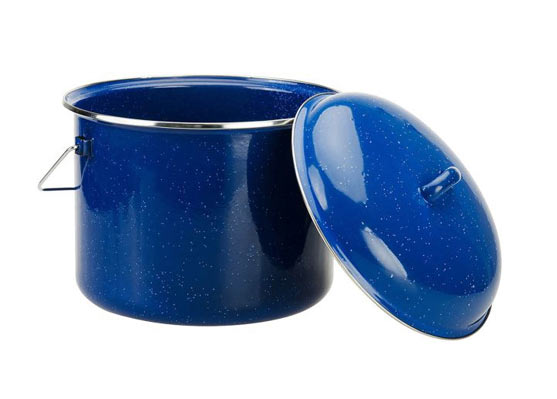


Porcelain enamel (also called vitreous enamel or glass-lining) is an engineered boro-silicate glass layer, which may be applied in a liquid or powder form and fused on a metal substrates, like mild steel, cast iron, stainless steel, aluminium or copper.
Unique properties : This inorganic coating was already used by the Egyptians for art and jewels around 1000 B.C. and may be characterized by a number of unique chemical and mechanical properties, like
Typical applications: Enamel on mild steel (Also called ceramic steel or glass on steel) has been adopted by many different industries all over the world. It is nowadays used for providing a functional and/or decorative coating to a wide range of products.



Curing or firing a porcelain enamelling coating is done in high temperature enamelling furnaces.
In the early days these enamelling furnaces were made of refractory bricks, due to the required firing temperature between 800 and 850 degrees Celsius. However, such bricks are sensitive for thermal shocks and need to be heated up & cooled down very slowly.
Modern enamelling furnaces are nowadays therefore made of Low Thermal Mass insulation materials, like Rockwool & ceramic fibers.
The possibility to switch off a LTM furnace at the end of the day and heat it up again within 1 hour the next morning may provide significant annual energy savings up to 75 % in comparison with the old brick-lined furnaces.
Gas and oil are usually combusted inside so-called radiant tubes to avoid that the enamel coating and the furnace interior is affected by the resulting combustion gasses, such as CO2 and H2O.
Depending upon the furnace design, combustion exhaust gasses are either evacuated thru the furnace roof or thru a steel or ceramic exhaust gas channel to the furnace preheating zone in order to increase the furnace efficiency.
The remaining energy of the combustion gases may be used for secondary processes, such as heating dryers, heating the factory hall.
There is a wide variety of enamelling furnace designs, which may be classified into three groups: box, intermittent & continuous furnaces.
Box furnaces are typically used for small production volumes and/or products with extreme dimensions.
However, most enamelling furnaces are equipped with an overhead conveyor, which is runs either continuous or intermittent.
In some case furnaces with intermittent operated conveyors have automatic doors in order to avoid heat losses.
Enamels fuse and create a strong bond with the metal substrate when remaining for some minutes above its soaking temperature.
The exact holding time and soaking temperature depends upon the chemical composition of the enamel frit combination.
The primary function of an enamelling furnace is to heat-up products to the soaking temperature and ensure that this temperature is maintained for at least the required holding time.
To ensure a good & repeatable enamel coating quality, it is important that the furnace’s Bozsin-box curves are smooth (to avoid thermal shocks) and show little temperature difference between the top & bottom of the products (to avoid colour differences and/or wrapping).
From an economical point of view, it is important that the furnace requires as little as possible energy to fire a product.
This is called the typical energy consumption of the furnace and is usually expressed as Kcal/kg or KWh/kg.
The typical energy consumption is determined by the furnace design, its heating efficiency & utilization.
Gas or light oil fired furnaces are usually equipped with an internal and/or external heat exchanger to recover excess energy from the furnace exhaust gas in order to improve its heating efficiency.
The investment in an external heat exchanger only pays back, if there are other energy demanding processes near the furnace location